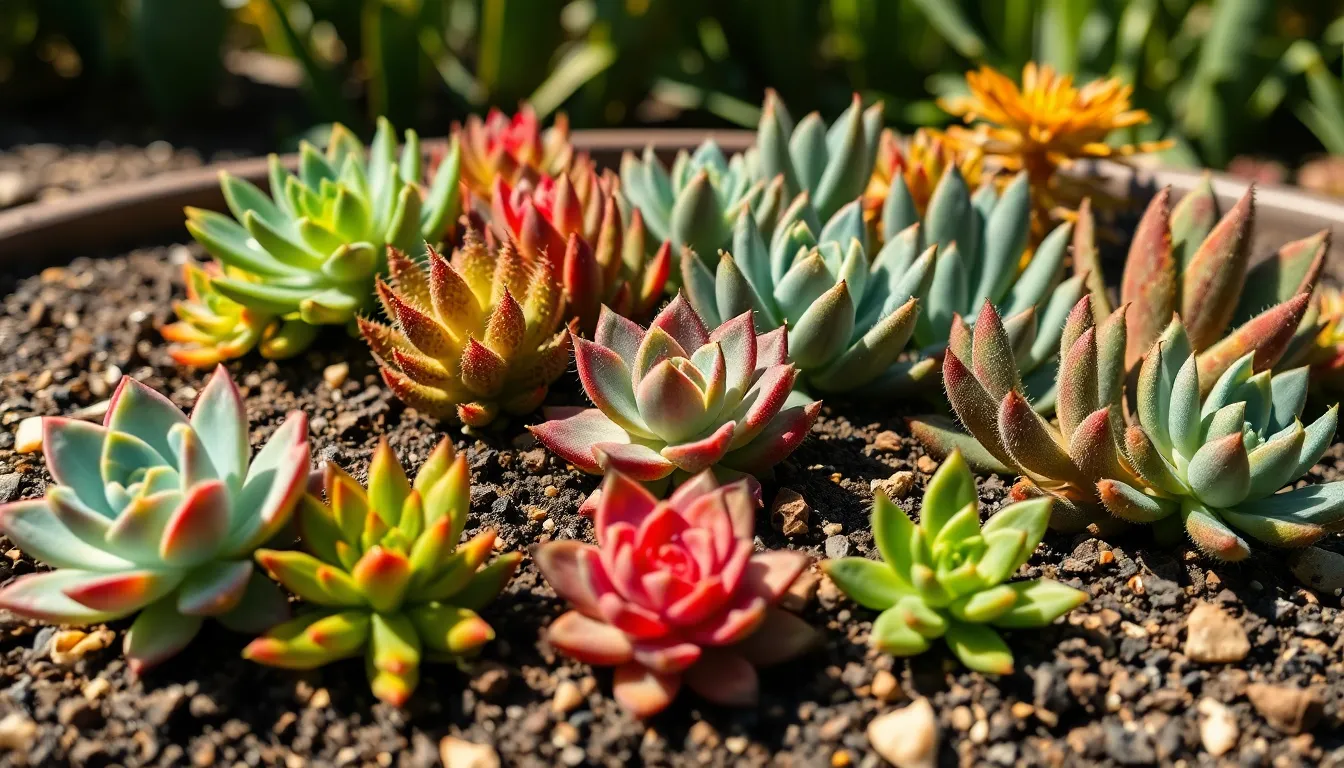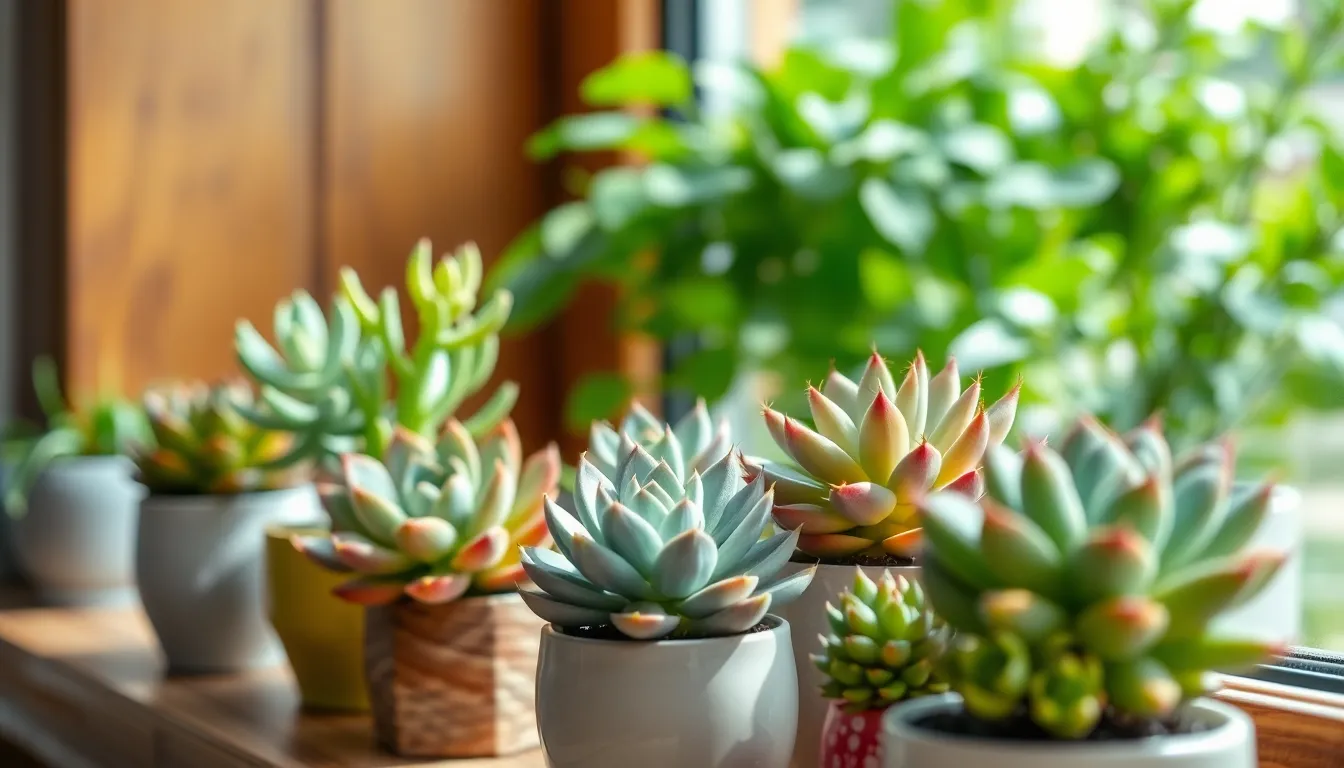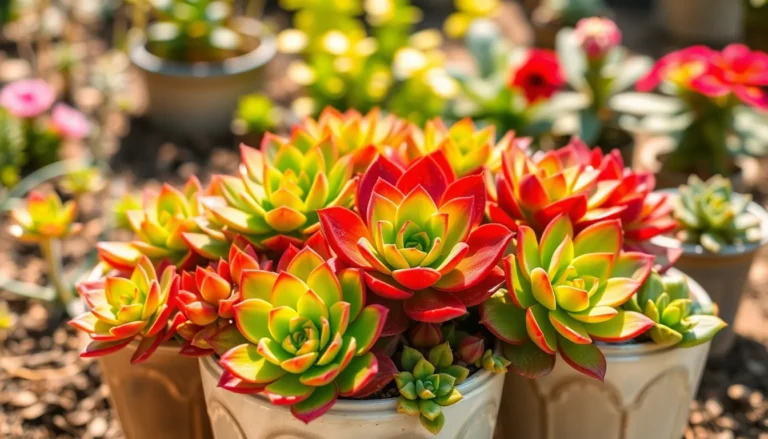Succulents are the trendy green companions everyone’s raving about. They’re low-maintenance, stylish, and bring a touch of nature indoors. But when it comes to watering, many find themselves in a bit of a pickle. Too much water and your succulent might look like it just survived a monsoon; too little and it’s waving a white flag of dehydration.
So how often should these little green warriors be watered? The answer isn’t as dry as a cactus, but it does require a bit of finesse. Let’s dive into the world of succulent hydration and discover the perfect balance to keep those leaves plump and happy. After all, nobody wants a sad succulent staring back at them, right?
How Often Should Succulents Be Watered
Succulents are unique plants known for their ability to store water in their leaves and stems. This adaptation allows them to thrive in arid environments.
What Are Succulents?
Succulents belong to a variety of plant species characterized by thick, fleshy tissues. These plants excel at retaining moisture, making them ideal for dry conditions. Various environmental factors influence their growth, including temperature and light. Some varieties exhibit vibrant colors, while others feature intricate shapes. Understanding their biology aids in proper care, particularly watering needs.
Common Types of Succulents
Numerous types of succulents are popular among plant enthusiasts. Echeveria showcases rosettes with vibrant foliage. Aloe vera is renowned for its medicinal properties and thick leaves. Sedum includes many varieties, all easy to maintain. Haworthia features distinctive patterns and shapes appealing to collectors. Kalanchoe brings bright flowers, adding a splash of color to any space. Each type varies in care requirements, especially regarding watering frequency.
Factors Affecting Watering Frequency

Several factors influence how often succulents need water. Understanding these elements helps ensure healthy plant growth.
Soil Type
Soil type plays a crucial role in water retention. Well-draining soil allows excess moisture to escape, reducing the risk of root rot. A mixture containing sand, perlite, or pumice is ideal. These components promote aeration and drainage while still retaining some moisture. Conversely, dense or compacted soils hold water longer, leading to potential overwatering issues. Gardeners should choose a soil mix designed specifically for succulents to optimize watering routines.
Climate and Environment
Climate and environmental conditions significantly impact watering frequency. Warm, dry climates often require more frequent watering, while cooler, humid areas may need less. Indoor succulents exposed to direct sunlight may dry out faster than those in shaded locations. Seasonal changes also affect moisture levels; summer heat can increase water evaporation rates. Regularly assessing the surrounding environment helps determine when and how much to water.
Plant Size and Age
Plant size and age determine water needs as well. Larger succulents typically require more water than smaller ones due to their greater leaf surface area. Younger plants also need more frequent watering as they establish their root systems. Older, well-established succulents can often thrive with less water. Monitoring the plant’s growth stage helps adapt the watering schedule accordingly, ensuring it remains healthy throughout its life cycle.
Should Succulents Be Watered

Determining how often to water succulents hinges on various factors. These include the plant type, environmental conditions, and soil quality.
Signs That Succulents Need Water
Succulents display specific signs when they require water. Leaves may appear wrinkled or shriveled, indicating dehydration. The color can also change, becoming pale or dull. Additionally, soil texture provides clues; if it feels completely dry several inches down, it’s time to water. Check the plant’s weight; a lighter pot often signifies the need for hydration. Monitoring these indicators promotes timely watering practices.
Signs That Succulents Are Overwatered
Overwatering leads to distinct symptoms in succulents. Leaves may begin to turn mushy or translucent, suggesting excess moisture. Yellowing leaves often accompany these signs, presenting a clear warning. Additionally, a foul smell from the soil can indicate root rot, signaling a serious issue. Pests may thrive in overly damp conditions, making regular checks vital. Recognizing these signs helps avoid detrimental watering mistakes.
Best Watering Practices
Understanding effective watering practices promotes healthy succulents and prevents common issues related to moisture levels.
Watering Techniques
Watering techniques play a crucial role in succulent care. Pour water directly onto the soil until it drains from the pot’s bottom, ensuring the roots soak up moisture. Avoid watering the leaves to prevent rot and fungal issues. Use a watering can with a narrow spout for precision. Consider applying a moisture meter to check soil levels accurately. This helps establish consistency in watering intervals and prevents overwatering. Adopting a deep watering approach fosters healthy root development. Checking the drainage holes for excess water indicates whether the plant needs more time to dry.
Seasonal Adjustments
Seasonal adjustments can optimize the watering schedule for succulents. During spring and summer, increase watering frequency since these are growth periods. At this time, warmer temperatures and longer daylight hours encourage active growth. In contrast, reduce watering in fall and winter, as succulents enter a dormant phase. Cooler temperatures and lower light conditions slow their moisture uptake. Monitoring the environment guides timely adjustments to watering routines. Checking soil moisture regularly ensures plants receive the right amount of water based on the season.





